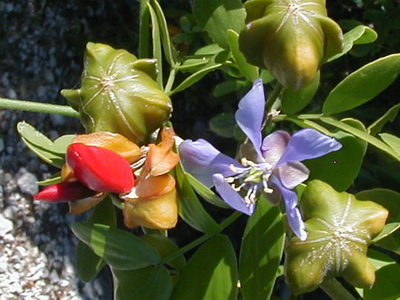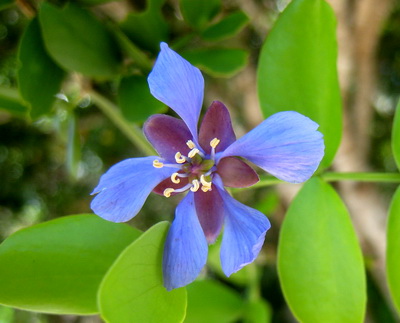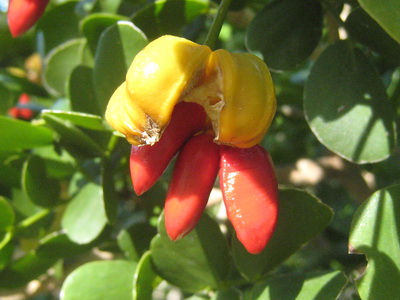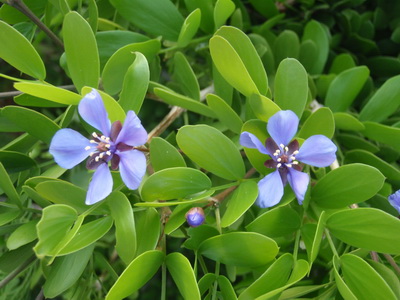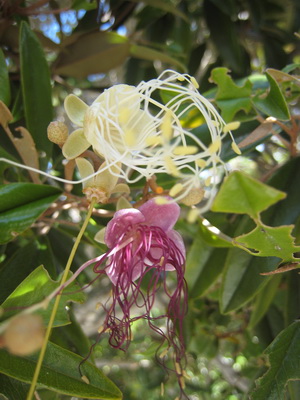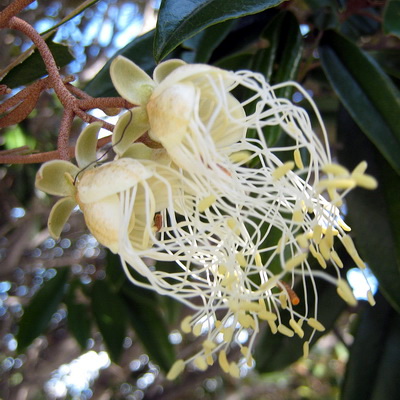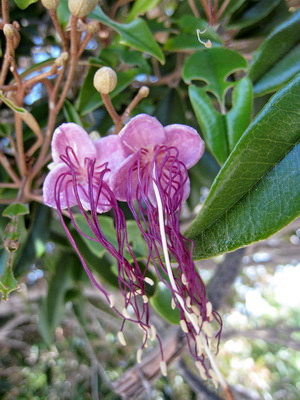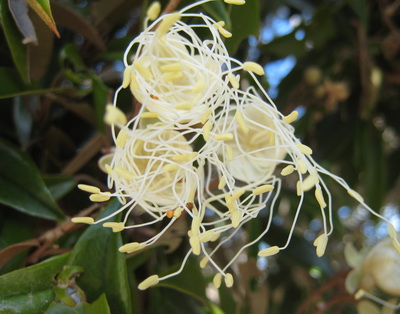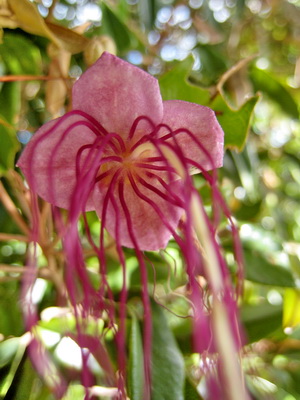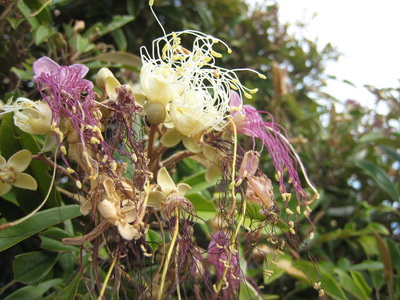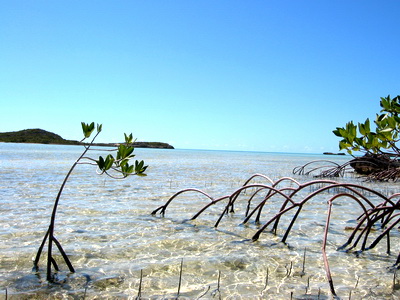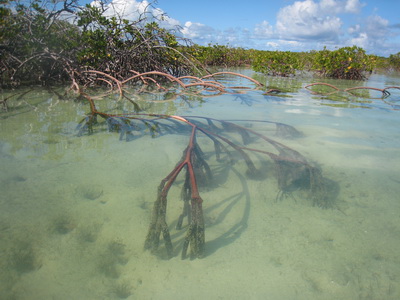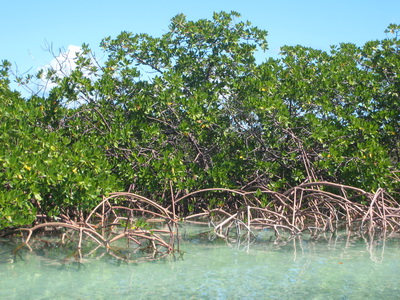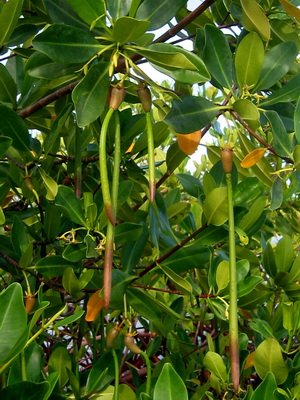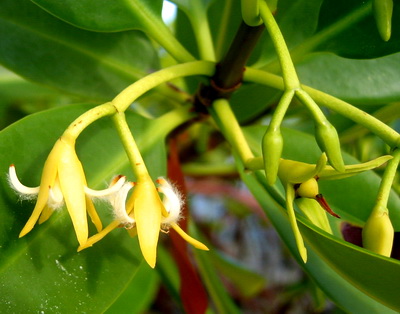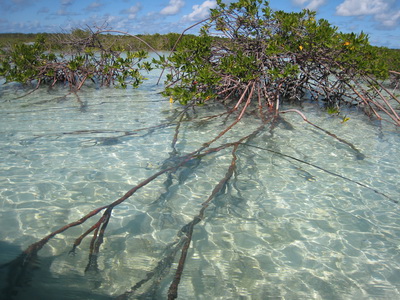The other day I noticed a Lignum Vitae just loaded with bright yellow-orange fruits. The fruits are capsule shaped and they split open in September and October to expose black seeds that are enclosed in a fleshy red pulp.
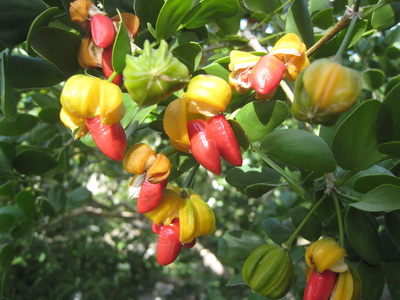
Lignum Vitae translated from Latin means "tree of life" and was used in folk medicine as well as being prized by carpenters.
Commonly called ironwood, the wood is so dense that it will not float even in seawater. Lignum Vitae is the heaviest and densest wood in the world and will rapidly sink to the bottom when placed in water. It resists rot caused by insects and moisture that lignum vitae wood used as posts for dwellings by Taino Indians have been found. Loyalist settlers also harvested valuable hardwoods from the Caicos bush and exported them to Europe.
The resin has been used for many years, in the treatment of arthritis and other ailments. At one stage it was thought to work both a contraceptive and a treatment for syphilis. Teas have been prepared from various parts of the tree and have been used to treat boils, swollen glands, fevers, aches and pains.
What an amazing tree…………even the insects and nectar drinking birds love the nectar of the Lignum Vitae.
Marta

